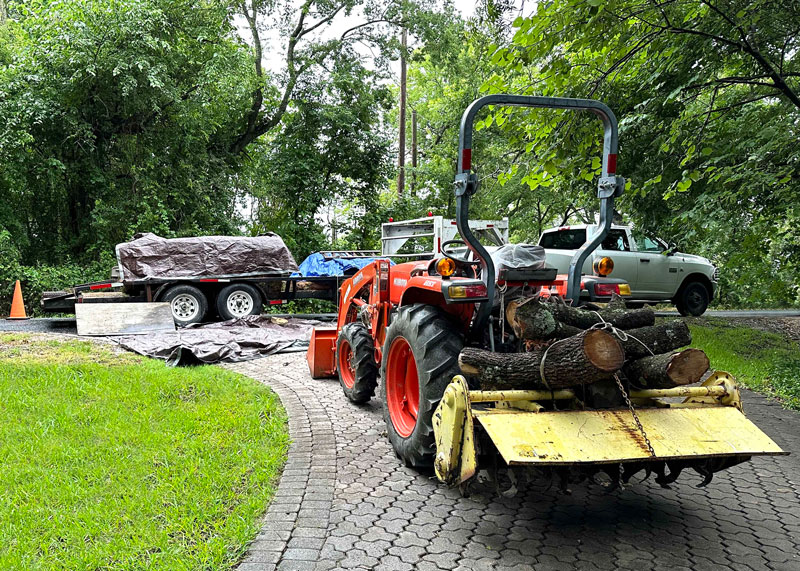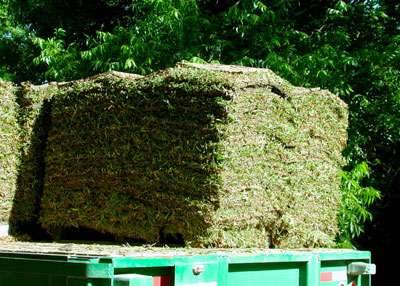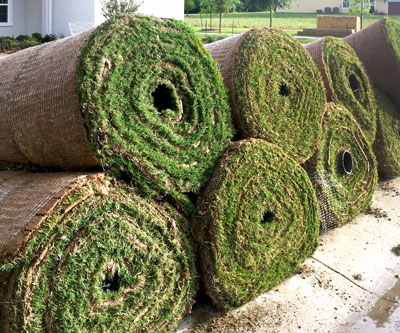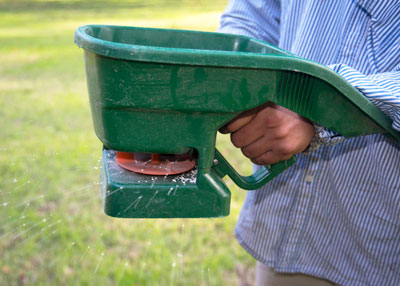Bad Day to Plant Sod

We’ve lived in our house for 46 years. As you can tell from the abandoned homesite across the county road, we are very country. Along with the Sperrys, coyotes, bobcats and feral hogs call this place home.
A few months ago, we got the good news that we’d need a new aerobic septic system, and that the only good place to put the new tank would be “up on our hill.” The man we hired was terrific, but there’s just no way to put in a new septic tank without tearing up your hillside meadow.
I was left with pretty much bare soil where we used to have turfgrass. I waited a couple of months to see how much grass would come back, and then we decided it was time to order three pallets of bermuda to fill in the rest.
It arrived the day before yesterday – just hours after a 2-inch rain soaked all the freshly tilled soil. Every cubic inch of it. It was still raining when it arrived and as the crew started laying it in place. But it’s a meadow, not our landscape, and it’s bermudagrass, so I’m sure it will be fine. It will just be nice to let Zeus run off his zoomies without tracking mud.
How to plant sod…
In the meantime, here’s how you want to plant new sod in your more perfect world. I can do this fairly quickly.
- Apply a glyphosate herbicidal spray to kill all the existing vegetation – competing grasses, broadleafed weeds, etc. Give it two weeks to do its work. Be sure it contains only glyphosate and no other active ingredient.
- Rototill to a depth of 3-4 inches. A rear-tine tiller works best.
(In answer to the unasked question: No, you cannot plant new sod on top of old turf without rototilling the soil first.)
- Rake to remove all the stubble, rocks and other debris.
- Use the garden rake turned upside-down to establish a smooth grade that drains away from the house. This will be your only chance to do that.

- Lay the sod snugly piece-against-piece so that there are no cracks between them.
- Try as you will, there will still be a few seams. Fill them with sandy loam topsoil.

- Water the new sod as soon as possible, then twice daily for 5-10 minutes per time for the first 10-14 days.
- Gradually switch to one time per day, then every 2-3 days.
- Mow as soon as the new grass starts to grow. Do not allow grass to grow beyond its recommended mowing height. Remember my words: “Tall grass becomes weak grass.”

- Fertilize after the second mowing with a slow-release, all-nitrogen food at half the normal turf rate.
- Repeat one month later at the normal turf rate. Follow each feeding immediately with a deep soaking.
Note: It’s usual for new sod to look a little worse the first week after planting. It should take root and soon start to look much more vigorous.
